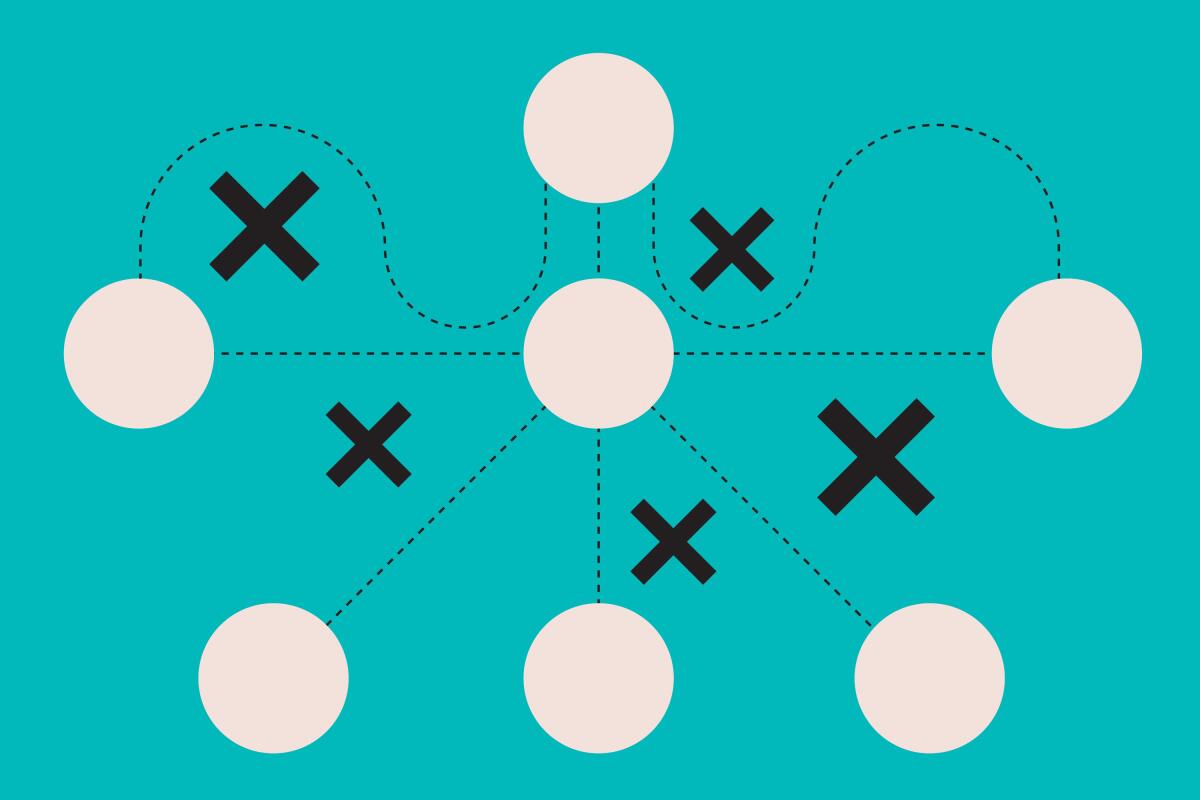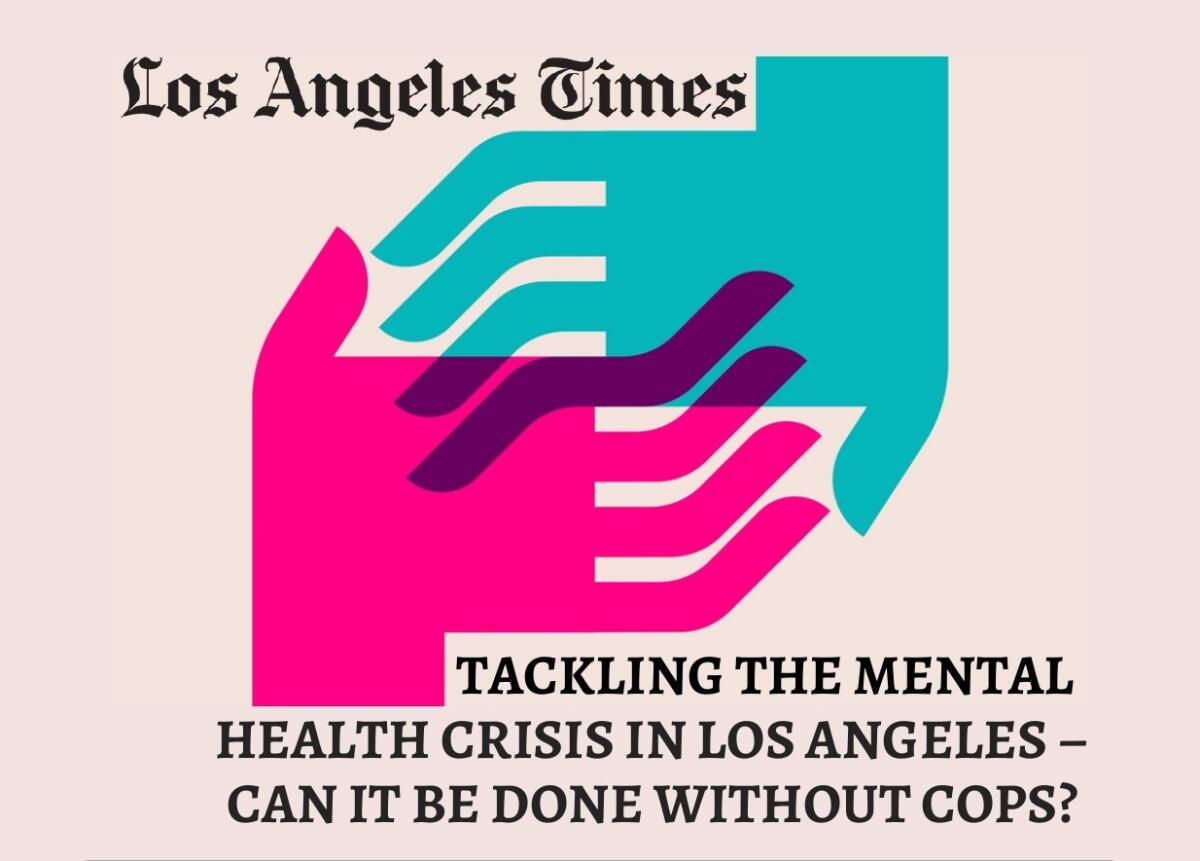How to plan for a potential mental health crisis

- Share via
This story was originally published in Group Therapy, a weekly newsletter answering questions sent by readers about what’s been weighing on their hearts and minds. Sign up here to get it in your inbox.
Hi there! My name is Ada Tseng, and I’m an assistant editor of the Utility Journalism Team — “news you can use” — at the L.A. Times. I’m filling in for Laura Newberry.
For the record:
5:00 p.m. Aug. 17, 2023A previous version of this newsletter stated that Jennifer Hallman brought up the importance of a psychiatric advance directive. It was Michelle Parris who encouraged attendees to learn about PADs.
Last year, I worked with reporter Agnes Constante, who led a project at the Los Angeles Times exploring mental health in the Filipino American community and the forces that influence it.
Before she reported each of the stories in her series, we hosted listening sessions with mental health providers, academics and community members from across the U.S. — who shared so many insights with us, many couldn’t fit in her stories.
One memorable takeaway was that karaoke (and singing in general) can be a form a self-care — this convinced me that The Times could use some more karaoke journalism. (If it’s Taylor Swift karaoke, even better.)
But another, more startling off-record conversation that stood out to me was one where a couple of participants detailed their futile experiences calling an emergency helpline while in the middle of a mental health crisis.
The idea of a person calling for help as a last resort, and not getting the help they needed, was a reality that was hard to stomach. Last July, I was grateful to hear that L.A. County launched 988 — a national mental health hotline as an easy-to-remember alternative to 911 — and that my colleague Lila Seidman was investigating its effectiveness.
Get Group Therapy
Life is stressful. Our weekly mental wellness newsletter can help.
You may occasionally receive promotional content from the Los Angeles Times.
Mental health crises are difficult to navigate. But on the Utility Journalism Team, we’re a very practical bunch. We want to tell you a story, but more than that, we want you to feel like you left our interaction with something you can do about it.
Let’s talk about the challenges surrounding crisis response and the steps you can take to respond effectively if and when the time comes.
The debate over mental health crisis response
Until recently, 911 was often the default place to call for urgent help in a crisis. But such a call frequently brings law enforcement too, and a growing debate has emerged among mental health advocates: Should police be tasked with responding to mental health crises? And if not, who should?
One stat Seidman cites in her reporting estimates that approximately 40% of people killed by police officers are involved in a mental health crisis.
988 is part of a new mental health crisis system the county is developing that relies less on law enforcement. Callers and texters are connected 24/7 with listeners trained to talk about mental health crises. The California response — available in English and Spanish — is led by Didi Hirsch Mental Health Services.
In the first 11 months since 988 launched, Didi Hirsch reported 98% of roughly 280,000 calls, texts and chats were resolved without needing more help. In a fraction of cases, police were called.
While reporting on the 988 rollout and related psychiatric emergency services in L.A., Seidman analyzed four years of time response data for mobile crisis teams.

This week, I attended her webinar, “Tackling the mental health crisis in Los Angeles — can it be done without cops?” (It’s also available in Spanish.)
The Zoom panel — featuring Marla and Dave Thomas, hosts of the Mental Health Mondays podcast, a NAMI SFV program; Michelle Parris, program director for the Vera Institute; and Jennifer Hallman, manager of L.A. County Department of Mental Health’s alternative crisis response — focused on how these changes impact those with severe mental health conditions and their loved ones.
Imagining a more compassionate and responsive system is complex, the panelists repeatedly emphasized.
The ideal scenario would be a future where dialing 988 for a mental health crisis is as ubiquitous, automatic and effective as dialing 911 for an emergency. That way, law enforcement is not the only response.
“County officials don’t plan to completely remove police from responding to mental health crises,” Seidman previously reported. “They aim to reduce and refine law enforcement’s role so they respond only in the most dangerous or volatile situations.”
Marla and Dave Thomas said that they come from a community that does not trust police officers. Parris added that even if officers are trained in de-escalation, their presence can still intensify feelings of distress for a person in crisis and their families.
But in the Thomas’ experience navigating their sons’ diagnosis — which they identified as Bipolar I Schizoaffective Disorder — their son has occasionally struggled in his relationship with them, Marla Thomas said. In situations where there was a threat of violence, 911 was the family’s only resort to gain control of the situation, they said.
Struggling with mental illness and needing help is not a crime, Hallman said. There’s no reason for someone having a mental health crisis to be handcuffed and put in the back of a police car on the way to the hospital, she added. But there may be times when mental health professionals have done all they can do, and it wouldn’t be safe for them to continue without law enforcement as backup.
How to respond to a mental health crisis
With the system as it is, people still often opt to call for emergency assistance that may include police.
Marla Thomas wanted attendees to understand her situation as a mother. Even when she was worried about her own well-being, her main concern was always her son’s safety while they were calling for assistance.
She needed a plan in the event that police — or anyone who didn’t understand her son’s situation — responded to her home during a mental health crisis. Here are some of her tips:
- Clear the house of any other people before law enforcement comes. This creates a clear line for the police to deal with the individual who is suffering.
- She meets the police at a distance from her house. She puts her hands up, waves them down and tries her best to make it clear that they are coming into her home — and that she and they are on the same team.
- She calmly and clearly gives them all the information she thinks they need. She tells them that her son does not have access to any weapons. She explains that all her son wants most is to be heard.
- If the presence of officers escalates her son’s stress, she asks them to pick two people to go in. She advises one to do all the speaking and the other to provide safety and backup for the first.
- If she trusts that they have all the information, she steps back and lets them handle the situation.
Thomas said this is the plan that works best for her family. It neutralizes the threat and results in her son cooperating, so he can get the treatment he needs.
Parris encouraged those who are at risk of having a mental health crisis (or loved ones who want to help them) to create a psychiatric advance directive, also known as a PAD. This is a document you put together when you’re healthy to prepare for what might happen when you’re not, tailored to your unique needs. This can include what words can escalate and deescalate a situation; which medications work or do not work; and who should be the substitute decision maker for the person in crisis.
And if you’re comfortable, share the plan with your loved ones.
You can also communicate with your neighbors about your family’s situation to build awareness of what’s normal and what’s not for you or your loved one.
Marla Thomas said she talks openly about her son’s condition with their neighbors. She wants them to know that while he may walk around talking to himself, he’s not going to harm anyone. Having these conversations takes away the fear and element of uncertainty, she said.
By sharing these plans, you’re also creating a care team for your vulnerable loved ones if you’re not around, added Dave Thomas, and letting people be a part of your journey.

Take care of yourselves,
Ada
If what you learned today from these experts spoke to you or you’d like to tell us about your own experiences, please email us and let us know if it is OK to share your thoughts with the larger Group Therapy community. The email GroupTherapy@latimes.com gets right to our team.
See previous editions here. To view this newsletter in your browser, click here.
Enjoying this newsletter? Consider subscribing to the Los Angeles Times
Your support helps us deliver the news that matters most. Become a subscriber.
More perspectives on today’s topic & other resources
How do psychiatric advance directives work? Scoll through this FAQ about PADs created by the mental health organization Painted Brain and the USC Gould School of Law.
Try this PAD template created by the National Resource Center on Psychiatric Advance Directives, if you need a starting point.
What rights do patients have? This L.A. Times explainer delves into how involuntary mental health treatment works and the rights patients have.
What to do if you see someone having a mental health crisis. Times reporter Faith Pinho explains how to recognize when a stranger (or loved one) is in mental distress and how to help without adding harm.
Other interesting stuff
How listening to singing bowls, gongs and chimes can feel like a “massage for the brain.” Times reporter Deborah Netburn takes us behind the scenes of a sound bath in a Koreatown church. Read more about how the traditional chapel had been transformed into a vivid, flickering, cosmic sanctuary.
Roller skating, dancing, longboarding for mental health. Times columnist Jean Guerrero writes about how regular meetups with strangers and safe community space can be crucial for our well-being.
A comic about Puerto Ricans exploring spirituality. Artist Cindy Lozito shares the first of an interview series called “Si Dios Quiere (God Willing)” in De Los, a L.A. Times initiative that explores all things Latinidad.
Defining delusions. Psychiatrist and UCLA professor Alaina Burns writes about how it’s getting hard for her to distinguish the delusions of her schitzophrenia patients from our current digital reality.
“Birdsong can be as ephemeral as the bloom of a morning glory.” Reporter Dakota Kim writes about birdwatching, bird-listening and connecting with nature by recording birdsong.
Plants are great for self-care. Reporter Anna Braz writes about a greenhouse in a backyard on the east side of Torrance. It’s a sanctuary — and a place for healing.
How pickleball helped one un-calm person find her calm. Read about how pickleball taught writer Kate Spencer how to stop saying sorry and learn to have some fun.
Group Therapy is for informational purposes only and is not a substitute for professional mental health advice, diagnosis or treatment. We encourage you to seek the advice of a mental health professional or other qualified health provider with any questions or concerns you may have about your mental health.
Get Group Therapy
Life is stressful. Our weekly mental wellness newsletter can help.
You may occasionally receive promotional content from the Los Angeles Times.




